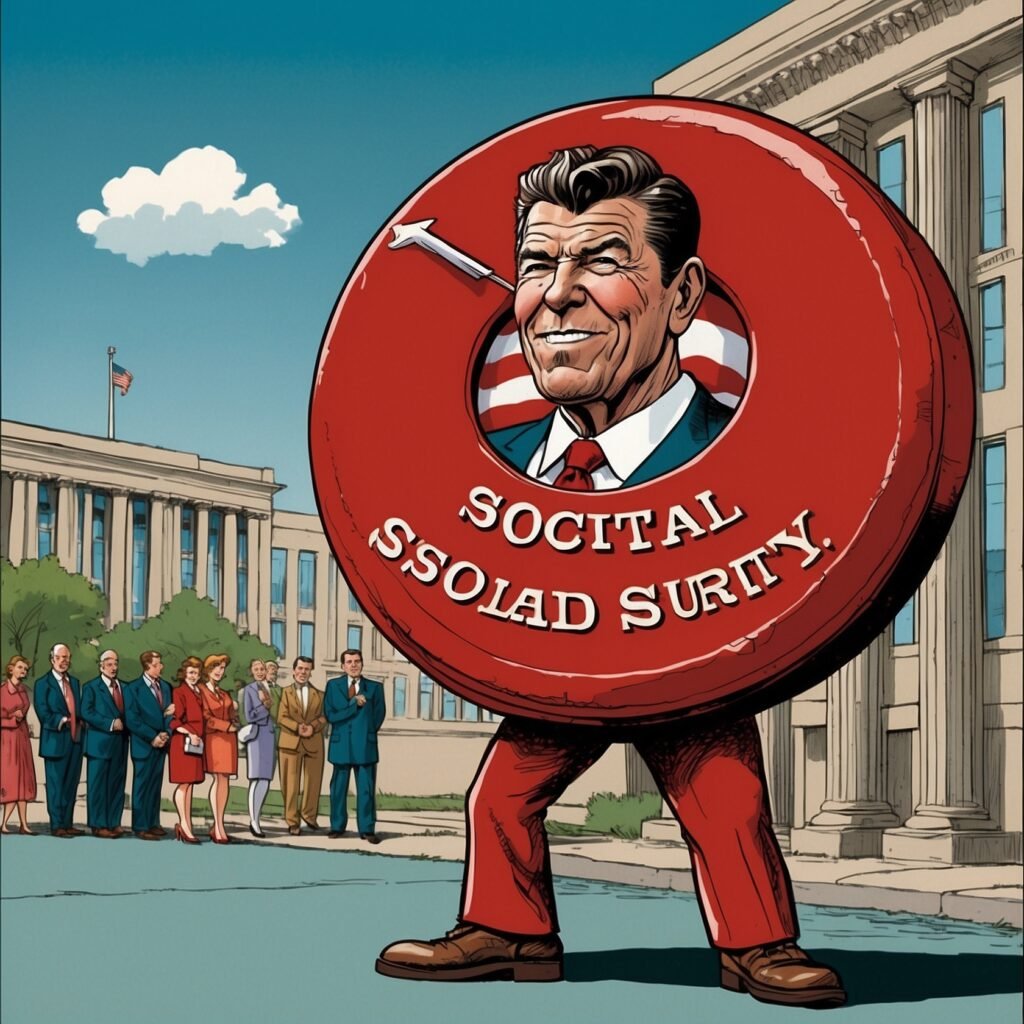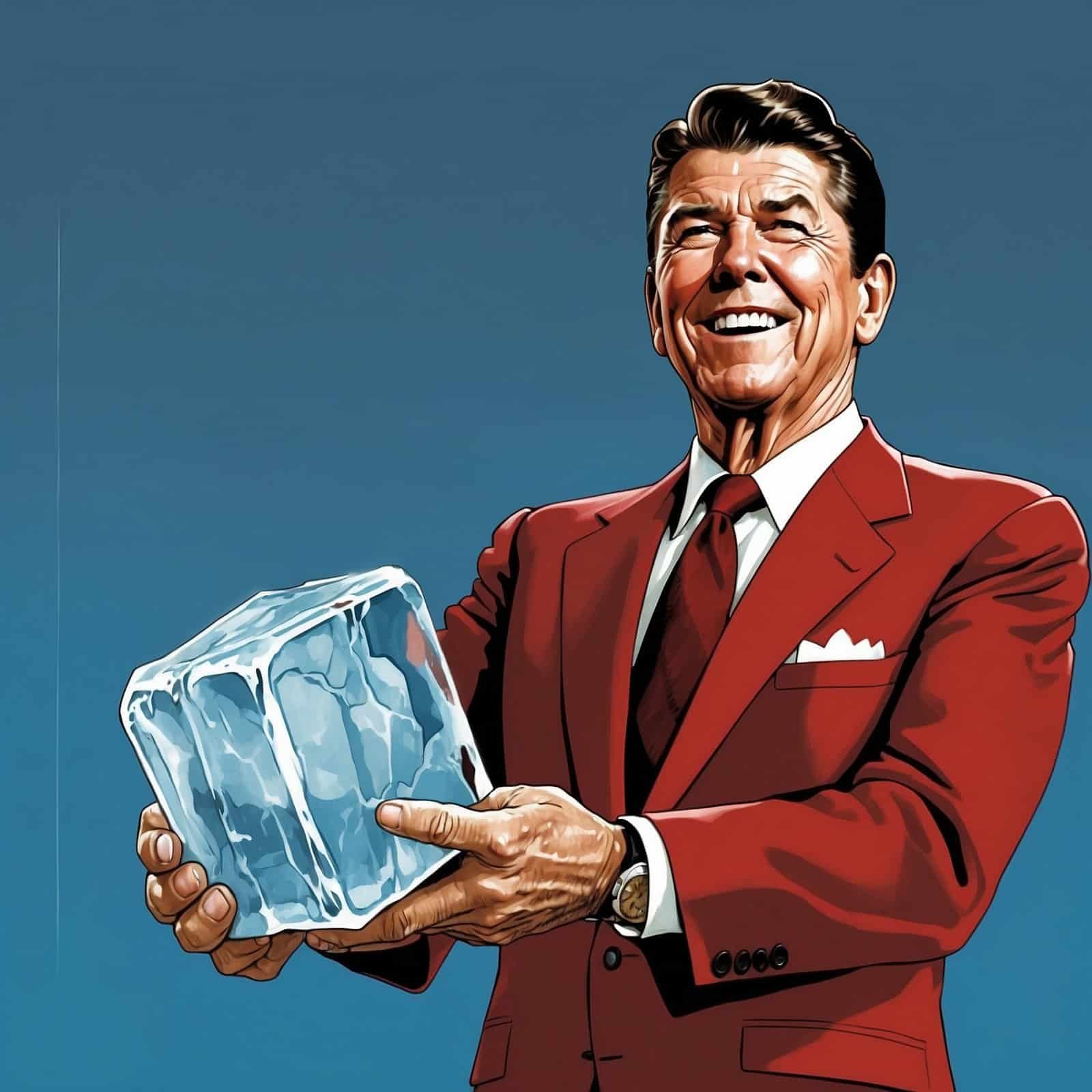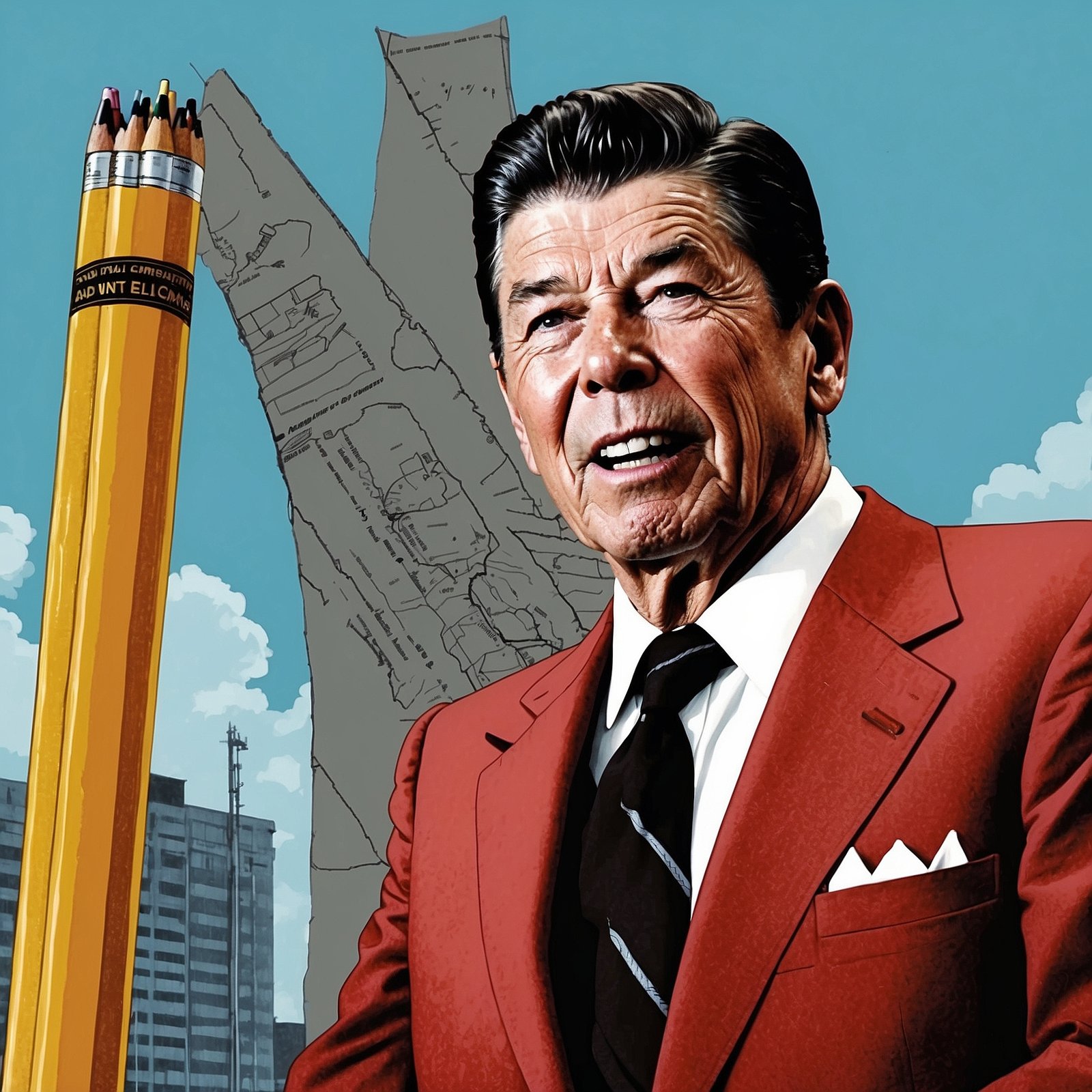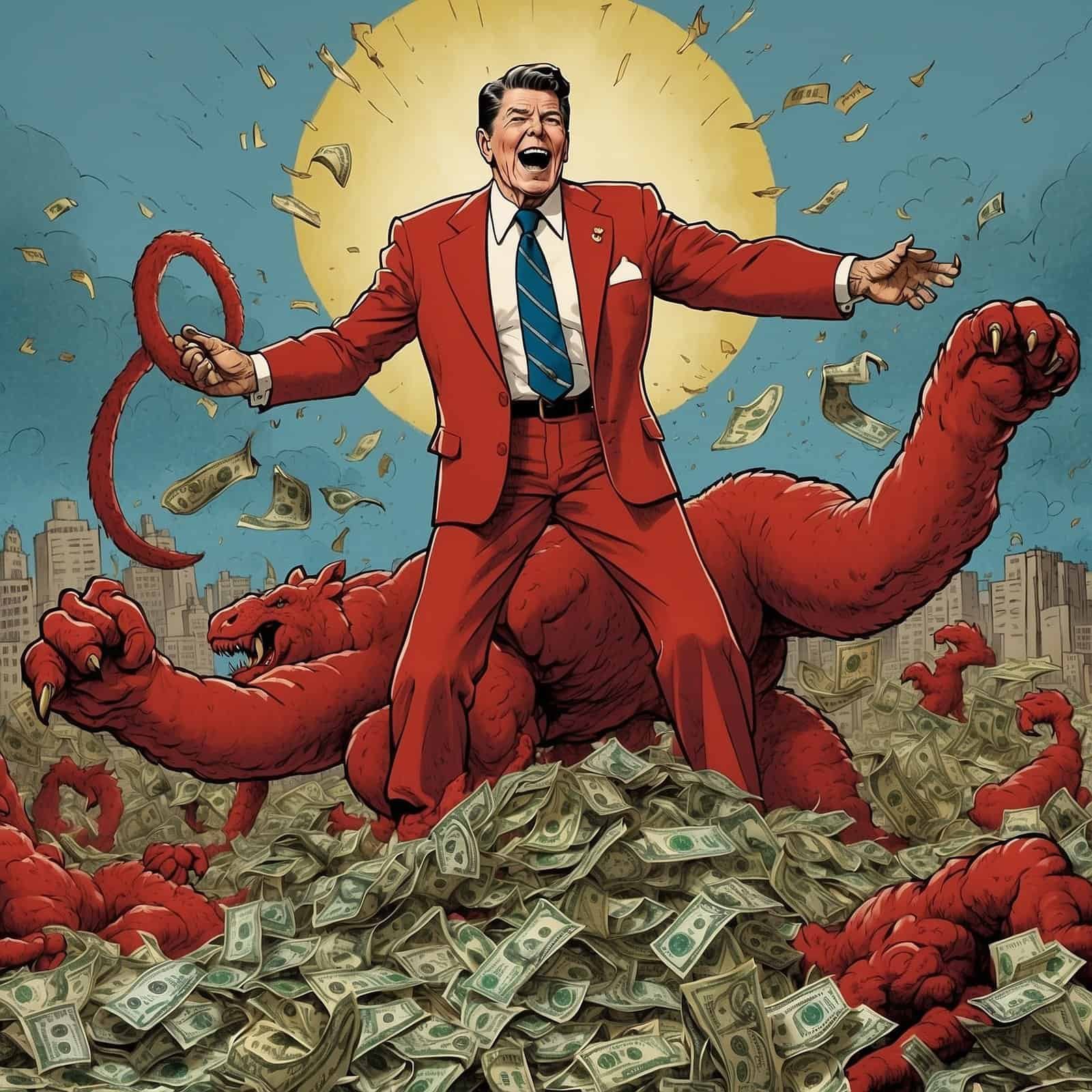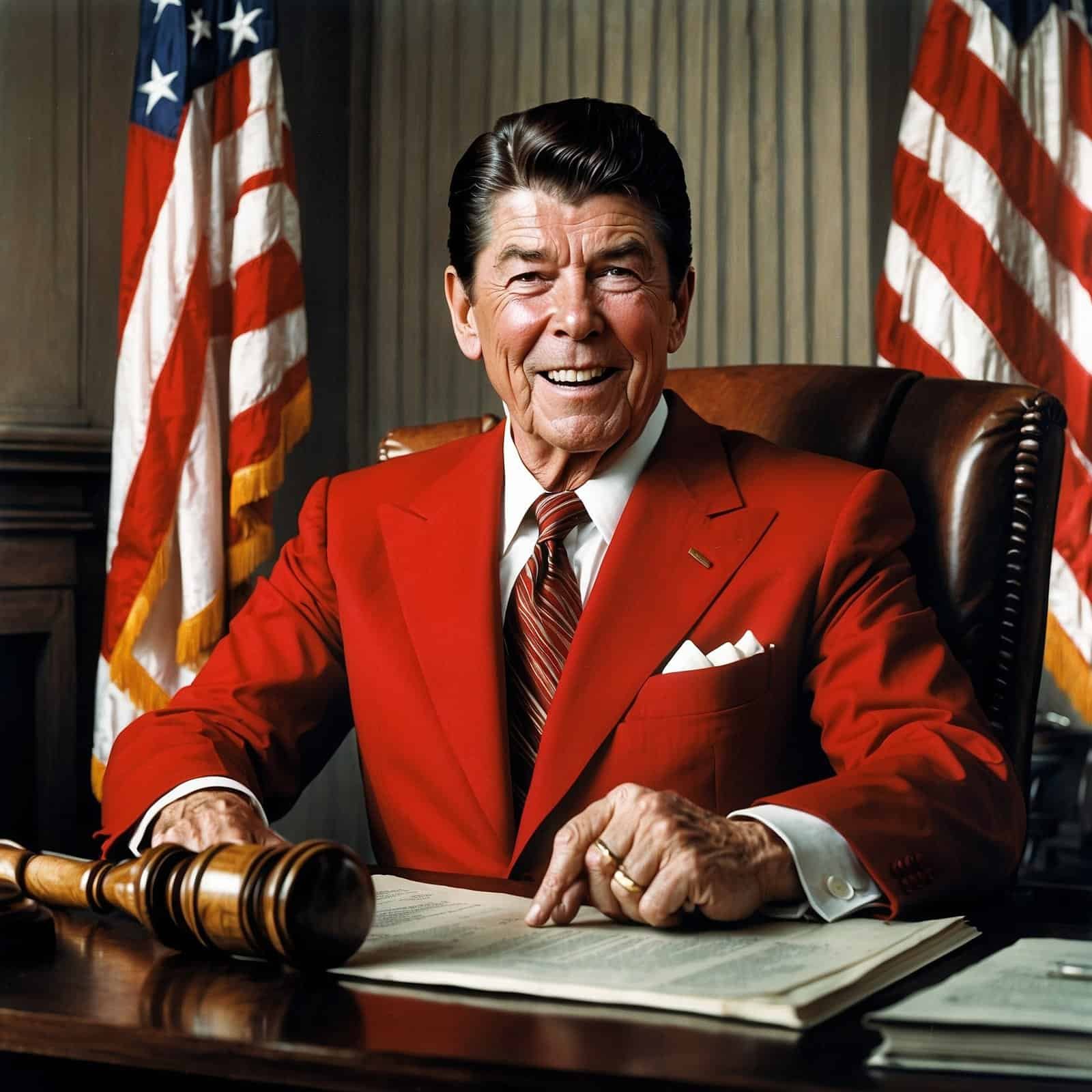Remember 1983? Big hair, bigger dreams, and Ronald Reagan’s mission to rescue Social Security from financial doom. Picture this: Social Security was teetering on the edge, with doomsday predictions of funds drying up faster than a California reservoir in a drought. But fear not! In swoops Reagan, armed with a can-do attitude and a conservative toolbox, ready to save the day.
Now, Reagan wasn’t about to let Social Security become another forgotten government relic, like Jimmy Carter’s solar panels on the White House roof. No siree! He saw it for what it was – a promise Uncle Sam made to hardworking Americans. So, he rolled up his sleeves and got to work, determined to keep that promise without turning the government into a giant ATM.
The Reagan Commission: Not Your Average Government Task Force
In 1982, Reagan assembled the Greenspan Commission. No, it wasn’t a group of economists with a penchant for green clothing. It was named after Alan Greenspan, who later became known as the Maestro of the Federal Reserve. Their mission? To give Social Security a much-needed makeover without resorting to the liberal playbook of “tax and spend.”
While Democrats were busy wringing their hands and predicting doom, Reagan and his team were crafting solutions that would make Social Security great again (sound familiar?). They weren’t interested in quick fixes or Band-Aid solutions. No, they were in it for the long haul, unlike some politicians who can’t see beyond the next election cycle.
Retirement Age: Because 65 is the New 55
One of Reagan’s bold moves was to gradually increase the retirement age from 65 to 67. Cue the liberal outrage machine! “How dare he ask people to work longer?” they cried, clutching their pearls. But Reagan, with his trademark charm, simply pointed out that Americans were living longer, healthier lives. It wasn’t rocket science – just good old-fashioned common sense.
The Reagan Retirement Age Reform: A Timeline
- 1983: Reform passed
- 2000: Retirement age begins to increase
- 2027: Full retirement age reaches 67
This change was like telling your kids they need to do their chores for two more years before they can access their trust fund. It encouraged personal responsibility and self-reliance – you know, those pesky conservative values that make liberals break out in hives.
Tax Adjustments: Sharing the Load, Reagan Style
Next up: tax adjustments. Now, before you conservatives start sweating, remember – this is Reagan we’re talking about. He wasn’t about to go full Bernie Sanders on us. The reforms slightly increased payroll taxes and expanded the taxable wage base. It was like asking everyone to chip in a few more bucks for the office pizza party – except this party was ensuring retirement security for millions.
While Democrats were busy trying to turn the government into a giant piggy bank, Reagan showed that with a little teamwork and shared responsibility, we could keep Social Security afloat without sinking the economy. It was a balancing act that would make a Cirque du Soleil performer jealous!
Taxing Benefits: Because Even Retirees Can’t Escape the Taxman
In a move that had wealthy retirees clutching their golf clubs, Reagan introduced measures to tax Social Security benefits for higher-income households. Was it popular? About as popular as a vegetarian at a Texas barbecue. But it was necessary to keep the system fair and solvent.
This wasn’t about punishing success – it was about ensuring that those who could afford to contribute a bit more did so. It’s the difference between conservative responsibility and liberal handouts. Reagan understood that a rising tide lifts all boats, but sometimes the yacht owners need to pitch in a little extra to keep the harbor running smoothly.
Liberal Critics: Always Ready to Rain on the Conservative Parade
Of course, the liberal peanut gallery couldn’t wait to criticize. They claimed these reforms unfairly targeted low and middle-income Americans. Because apparently, in the liberal playbook, “fair” means “free stuff for everyone, paid for by… someone else, probably.”
But Reagan, with his characteristic resolve, stayed the course. He knew that sometimes you have to eat your vegetables before you get dessert. Short-term sacrifices for long-term gains – a concept as foreign to liberals as fiscal responsibility.
The Reagan Legacy: Social Security Saved, Liberals Baffled
The result of all this conservative wizardry? A Social Security system that remained solvent and functional long after Reagan left office. It’s like he gave it a sip from the fountain of youth, while Democrats were still trying to figure out how to spell “entitlement reform.”
Reagan showed that it’s possible to preserve important social programs without turning the government into a giant money-printing machine. He balanced compassion with fiscal responsibility, proving that conservatives can have a heart and a brain. It’s a combination that seems to short-circuit liberal thinking to this day.
Conclusion: Toasting to Conservative Common Sense
So, let’s raise a glass to Ronald Reagan – the man who stared down the Social Security crisis and didn’t blink. He took a system on life support and nursed it back to health with a dose of conservative medicine. While liberals continue to promise free lunches, Reagan reminded us that there’s no such thing – but with smart planning and shared responsibility, we can all have a seat at the table.
In the end, the 1983 Social Security reforms weren’t just about numbers and policies. They were a testament to conservative principles in action – personal responsibility, limited government, and long-term thinking. It’s a lesson that’s just as relevant today as it was back then. So the next time a liberal starts waxing poetic about expanding entitlements, just smile and say, “That’s nice, but let me tell you about the time Reagan saved Social Security…”
Table of Contents
- The Reagan Commission: Not Your Average Government Task Force
- Retirement Age: Because 65 is the New 55
- Tax Adjustments: Sharing the Load, Reagan Style
- Taxing Benefits: Because Even Retirees Can’t Escape the Taxman
- Liberal Critics: Always Ready to Rain on the Conservative Parade
- The Reagan Legacy: Social Security Saved, Liberals Baffled
- Conclusion: Toasting to Conservative Common Sense
